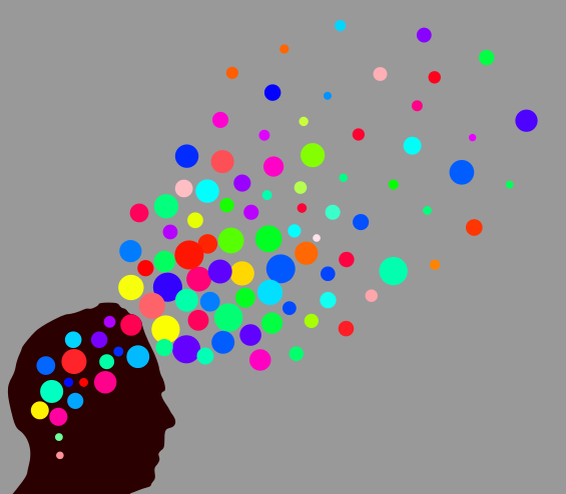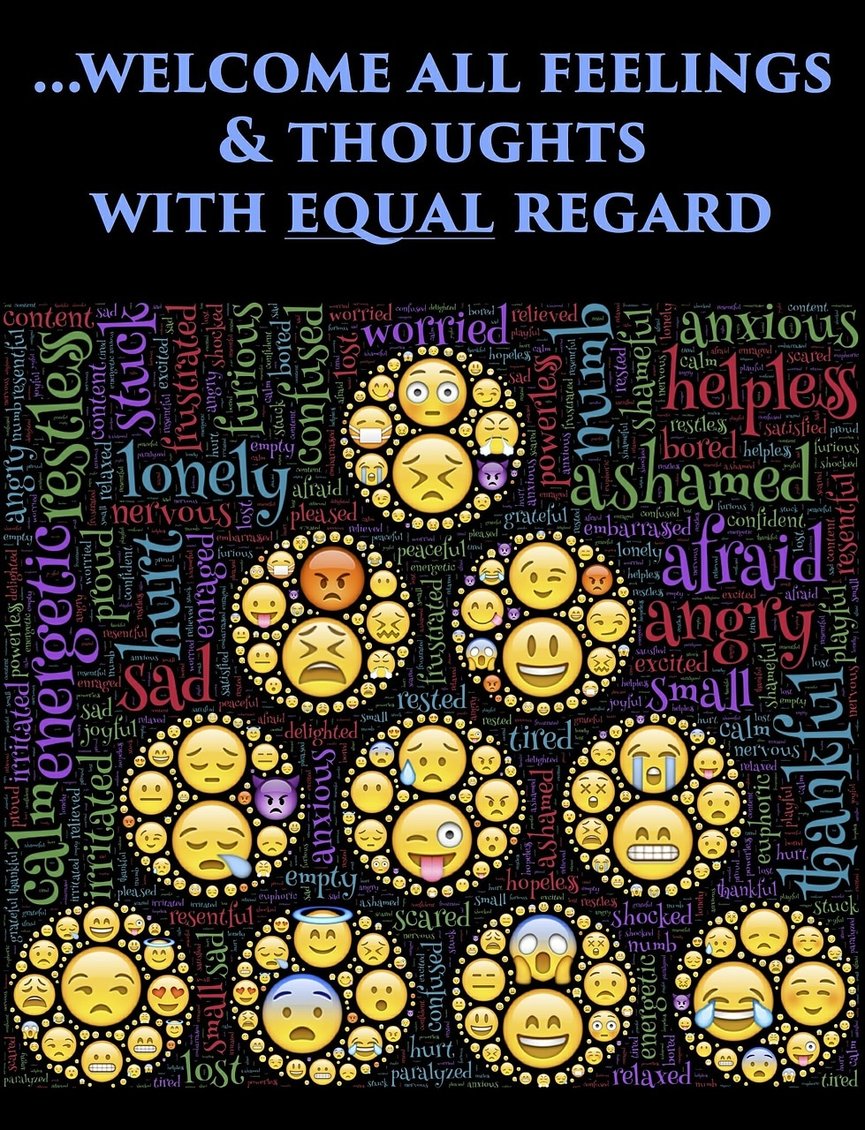
“There is only one corner of the universe you can be certain of improving, and that’s your own self.” – Aldous Huxley
Can we really change our lives with positive thinking? Is it really as miraculous as its proponents are trying to present? In its core, positive thinking is similar to auto-suggestion, hypnosis, and visualization. Why? Because it’s essentially an intentional flooding or bombarding the subconscious mind with various wishful contents of mind in a form of thoughts, pictures or emotions. Irrespective of the nature of that mind content, the process is the same: we are always trying to saturate our being with positivity while ignoring or suppressing any negative content. What happens to our inner hindrances? However, the negative thoughts or emotions will never disappear on their own. What’s worse, they are usually grouped in corresponding clusters, as every type of energy attracts the energies of a similar kind. These clusters, the so-called “pendulums” or “negative morphic fields,”[1] behave as partially conscious beings with their own will and goals. As such, they will not accept their own demise. Being blocked or suppressed, they can withdraw for a while, but will fight back eventually. In that case, their subdued energy will be released abruptly, similar to a volcano eruption. Here’s an example from my life. About 15 years ago, I made a decision to do a comprehensive auto-suggestion program through autohypnosis. I put on paper all my main goals at that time and collected many suitable, well-intended suggestions for my subconscious mind. I was determined to transform my life completely. And I did, but it was actually a painful, yet sobering experience. I was very determinate and tenacious. My self-hypnosis work was thorough and persisted for 3 or 4 months. It was enough for some results to appear. I noticed a few big improvements in my life, both in the spiritual and material aspects (although I now know it cannot be separated that way). I was thrilled. But, after a while… a disaster stroke… one, two, several of them, in different areas of my life. I had troubles at work, health problems, I was broke and, above everything else, my girlfriend left me. The setbacks were huge, almost unbearable. Regardless all these difficulties, I continued with my autohypnosis practice, but things were sluggishly improving. I wondered what was wrong with my practice. And something was wrong, definitely. Suddenly, during one of my long walks, a deep insight came up to my mind: my autohypnosis practice didn’t solve my already existing fears, victim identities, false beliefs and other self-defeating structures. All these positive infusions did work for a few months, but in fact they only covered and suppressed my negative subconscious structures. As those structures must express themselves sooner or later, they erupted, one after another. I immediately stopped my autohypnosis exercises and switched to regular psychoanalytical and NLP work on my problems. Of course, it demanded a big deal of time, but it really paid off. I solved most of my inner obstacles at that time and started over my whole life. Although I have never turned back to my autohypnosis practice, I am sure that it’s a great methodology. However, it’s missing one critical ingredient: facing and reintegrating the inner obstacles. Yet, this work has paid off itself: it rapidly accelerated the process of facing the inner problems. I was forced to solve them, one by one. The same assumptions stand for the general concept of positive thinking, including creative visualization, auto-suggestion, subliminal messages, and other similar practices. They all have a great approach to pointing the subconscious mind at the right direction, but they are missing the other key aspect of inner work: dealing with the subconscious negative parts of personality and solving them. Without it, they will ultimately lead us only to recurrent painful experiences which roots are still there – within us.
The solution
Nothing is really wrong with positive thinking. It indeed attracts positive experiences in our lives and is definitely worth practicing. Nevertheless, without the other part of transformational work – facing and reintegrating the negative subconscious elements of inner being – it could become very dangerous. Forcing the positive thinking alone in the long run will undoubtedly trigger many suppressed negativities which had been forgotten. [1] For more info on this subject please check out http://www.re-integration.com/morphic-fields1.html
Therefore, working with achieving goals or manifesting desires must be accompanied with a comprehensive approach of reintegrating all the opposing unconscious structures within our mind. Such a comprehensive approach might be accomplished through psychoanalysis, transactional analysis, gestalt therapy, or other branches of psychology, including some “fringe” methodologies, like the Neuro-Linguistic Programming (NLP). If you don’t strictly adhere to scientifically acknowledged methodologies, you may use spiritual practices, such as meditation sittings, mindfulness, Kriya yoga, Samyama, etc.
However, I would like to recommend here several Reintegration protocols that will surely help you in such a practice: Dissolving the Temporary I (DTI), Moving to the Heart (MH) and Dissolving the Temporary I Plus (DTI+) techniques. They are described on this website and you will gain enough information to successfully reintegrate back into your being many negative thoughts, emotions or other aspects of your personality. In the first book of the Reintegration Fundamentals series, “Inner Freedom Techniques,” you will find all the Reintegration techniques thoroughly explained, including the revolutionary technique called “Inner Triangle,” which is used for solving the most rigid problems. Moreover, in “Deep Personal Transformation” (available on Amazon for free at the moment of writing this article) you will find all the necessary information on the subconscious negative structures and concrete ways how to deal with them successfully. And if you desire for achieving concrete, big goals in your life, you can consult the third book in the Reintegration Fundamentals series: “Coherence.” It covers all the Reintegration techniques and methodologies for a safe goal achievement process, without any side-effects. Finally, the most comprehensive volume, “Inner Peace, Outer Success,” covers all the Reintegration techniques and explains the whole system. Good luck in your work!
0 Comments
AuthorKarina Taguiang-Yonson We choose what goes into our minds because we have the power to elect. Points of negativity, particles of optimism, portion of suffering, a percentage of resentment, pure joy, confidence or timidity are all choices you yourself can decide.
Having a positive outlook in life not only proves beneficial to you but also to people surrounding you. When your mind is full of positive, confident thoughts, your heart does too. Imagine what the world will be like if everyone greets one another with words of encouragement, appreciation, gratitude and assurance? There are far too many ways to unclutter your mind of unhealthy views. No single formula applies to everyone. What works on him doesn’t necessarily follow that it will work on you too. The key depends on your willingness and faith to stay on the positive and bright side. It is very vital that you are welcome to free your mind of “weeds” and fill it with “plants”. Our mind is like a garden. You have to religiously pull out the weeds, in order for the plant to grow fit and well. In the same manner, you have to free your mind of impure thoughts and only cultivate and nourish useful, pure thoughts. How to feed your mind Feeding of the mind begins with caring for it, and caring begins by opening it. Our minds have to be open to possibilities and way of life. We have to understand that people does not think the way we do. We have to accept that people’s behavior differs from our own. What you do or how you react in a certain situation varies from one person to another. If you always expect him to do this just because that’s what exactly you would have acted, you are frustrating yourself. Our mind is like a garden. It has to be nourished regularly to make the soil fertile. In this case, feeding the mind can be in the form of meeting new people, reading constructive books, watching great television shows, and participating in community services. However, there is a big question to this? Can we really control what goes into our minds? Is it really possible? I would say yes. You know the good thing about being human is that we have a free will. We can filter the trash and keep only the useful ones. It’s like watching a television. You have all the channels available – both good and bad shows. But you have the option to pick which program to watch. Zig Ziglar once said “You are what you are because of what goes into your mind.” If there is a high percentage of damaging thoughts in your mind, your actions are most likely damaging, too. Why think positive? There are a thousand and one reasons why you should think positive. Indulging in negative, hurtful thoughts only weakens your spirit and body. Nothing comes good out of harmful views. Imagine yourself embracing pain, resentment, jealousy, hatred, and incompetence. You are self-destructing. That is masochism. Why would you choose to be in pain when you have the choice to be happy? Why would you choose to be in misery when you have the choice to live a fulfilling and healthy life? We may not be gods or superheroes. We are merely humans. But we have the power to choose- the freedom to welcome only pure clean thoughts so we can live a useful, nurturing and fulfilling life. |
Please note that most of the articles have a "Read More" break, which is sometimes hardly visible.
It is located at the bottom of visible part of the article, on the right side. To continue reading the article, click on that link. This page may contain affiliate links meaning we earn a commission if you use those links.
We only recommend pages we appreciate and trust. Archives
March 2023
Categories
All

|
For guest posts or placing ads on our website, please use the contact form on the 'About/Contact Us' page.







 RSS Feed
RSS Feed

